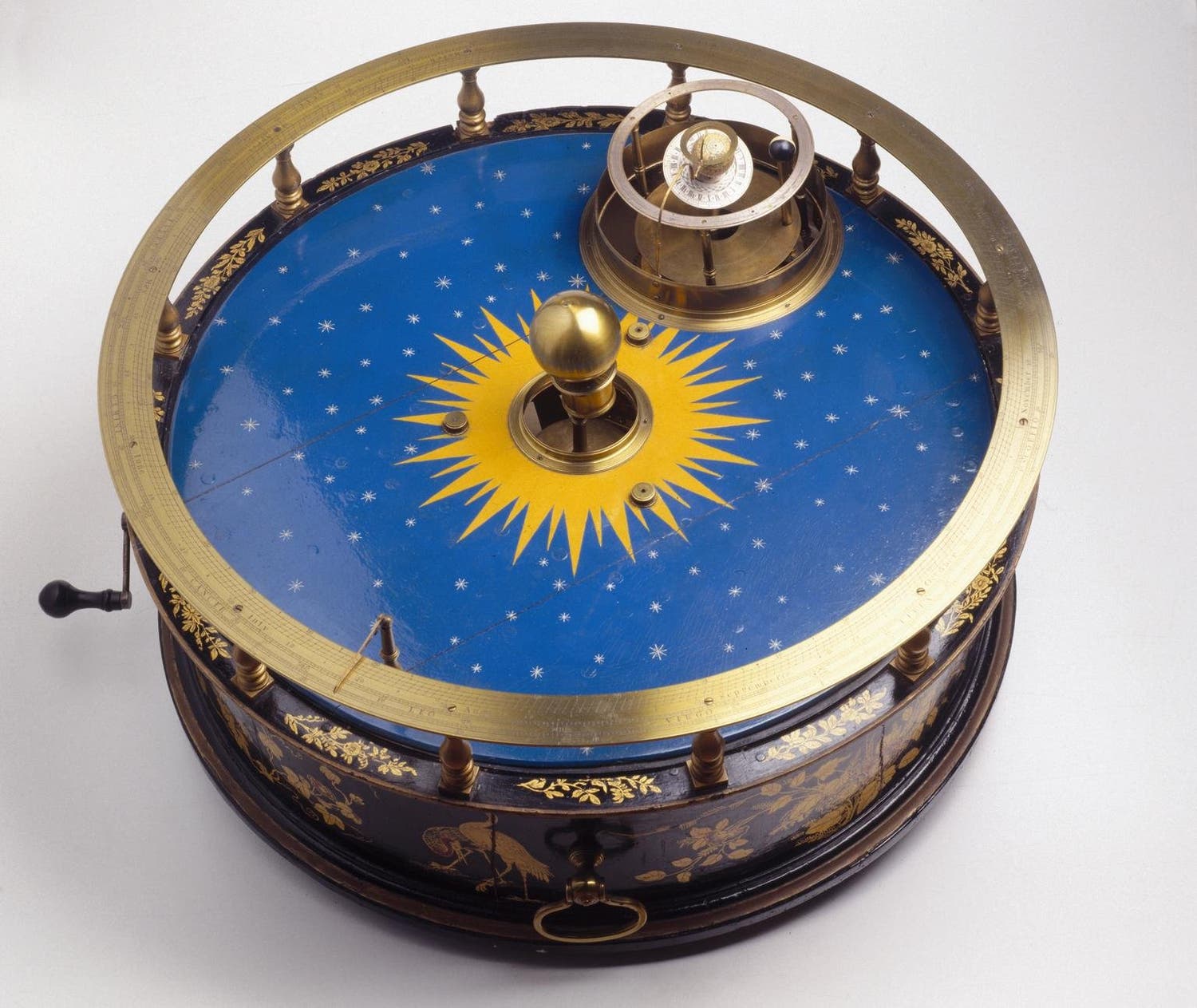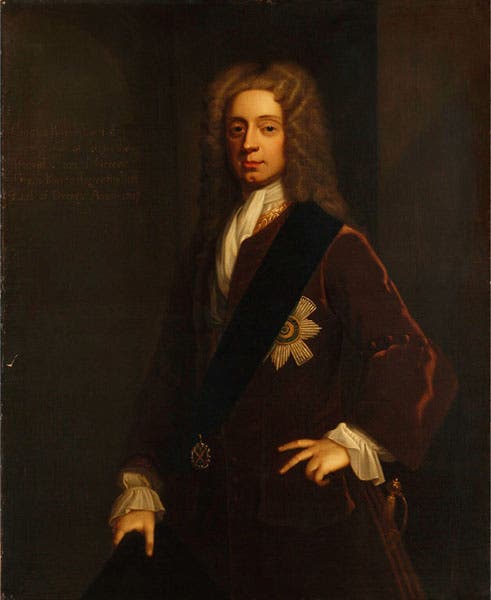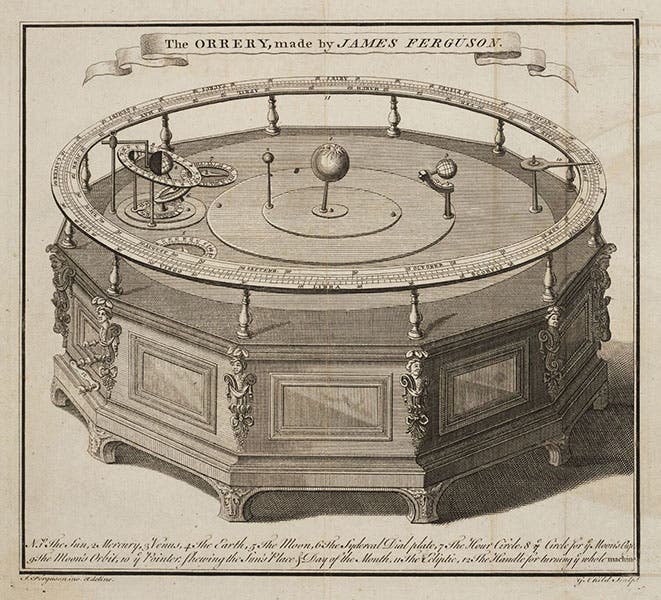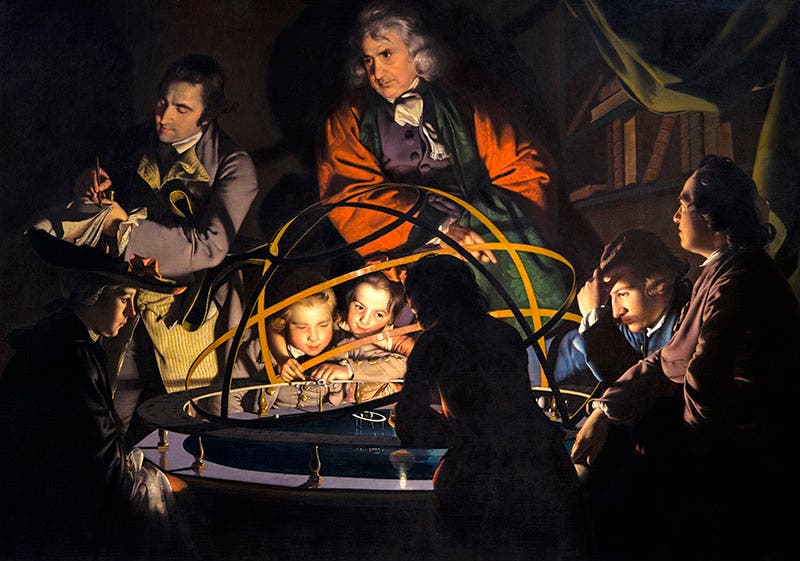Scientist of the Day - Charles Boyle
Charles Boyle, the 4th Earl of Orrery, was born July 28, 1674. Boyle was reasonably well learned, and he published an edition of the epistles of Phalaris in the 1690s, but mostly, he was rich and titled. He was related in a fashion to Robert Boyle, the experimental philosopher – both were descended from the 1st Earl of Cork of Ireland – but Robert never had the peerage, and Charles did. Which is probably why Robert, for all his achievements, is buried in the churchyard of St. Martin-in-the-Fields, and Charles, for all his lack of achievement, is buried in Westminster Abbey.
Charles Boyle is remembered mostly for an instrument that was named in his honor. In 1712, James Rowley, a London instrument maker, built a small mechanical device that replicated the motions of the Earth and Moon as the Earth orbited the Sun. It was built after the design of the instrument maker George Graham. Rowley made it for Charles, and he named it, after Boyle’s title, an “orrery”. This original orrery survives and is in the Science Museum in London (first image). We wrote a post on Graham once, where you can see a slightly different view of the same orrery.
The Rowley/Graham instrument was soon copied and improved on, but the name orrery stuck and is still in use for nearly any device that mechanically sets the solar system in motion. James Ferguson was a later London instrument maker, and we show an engraving of his orrery here (third image); you can also see it at our post on Ferguson. Note that the instrument is labelled “The Orrery” in the caption. David Rittenhouse was an American astronomer who designed two orreries for Princeton University and the University of Pennsylvania in 1770-71, and both of those can be seen in our post on Rittenhouse.
Some 35 years after Charles’ death in 1731, the artist Joseph Wright of Derby painted a dramatic scene depicting a philosopher demonstrating an orrery to a small group of excited onlookers (the drama coming from the fact that the scene seems to be lit entirely by the solar part of the orrery). The painting is now in the Joseph Wright gallery of the Derby Museum in the English midlands, and it is, so they claim, their most popular piece of Wrightiana (they have 27 paintings by Wright in the gallery). Its proper title is: A Philosopher Giving that Lecture on the Orrery, in which a Lamp is put in place of the Sun (ca 1766); it is usually just called The Orrery (fourth image).
Charles Boyle really didn’t do anything to deserve a portrait, but there is one, in the National Portrait Gallery in London, which we include here (second image). I would much rather show you a portrait of James Rowley, but, unsurprisingly, there isn’t one – not in the National Portrait Gallery, or anywhere else. Artisans have to be remembered by their creations, which, fortunately, can be just as informative as a likeness.
William B. Ashworth, Jr., Consultant for the History of Science, Linda Hall Library and Associate Professor emeritus, Department of History, University of Missouri-Kansas City. Comments or corrections are welcome; please direct to ashworthw@umkc.edu.










